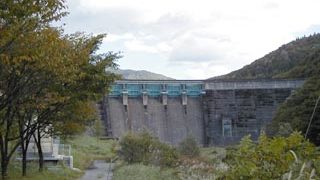 "sa" column or row of the kana syllabary
"sa" column or row of the kana syllabarydesign flood level
The design flood level is the water level of the dam lake at the time of the maximum flood that can be expected to occur once every 200 years (or the maximum flood flow in the past) during the dam's existence. It is assumed that the gates are fully opened and is taken into account as the highest water level that can be expected as a natural phenomenon.






